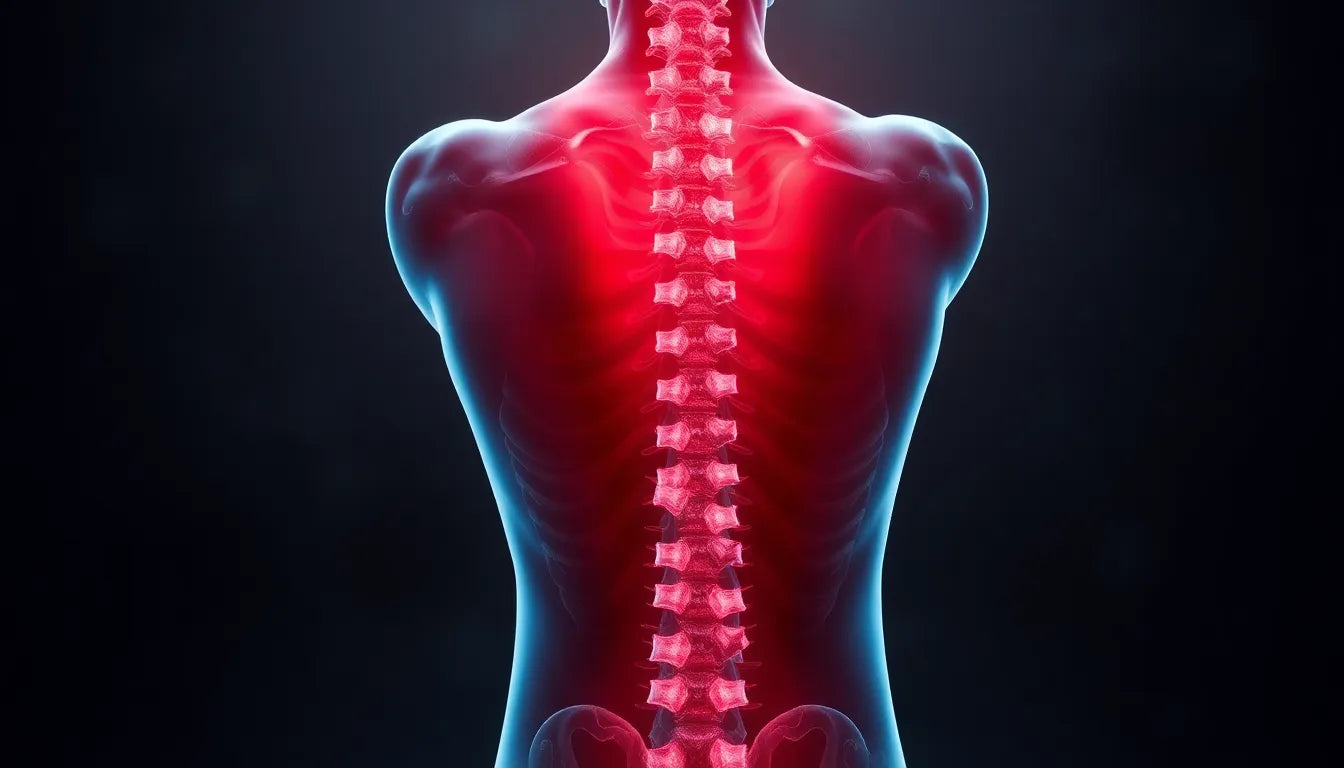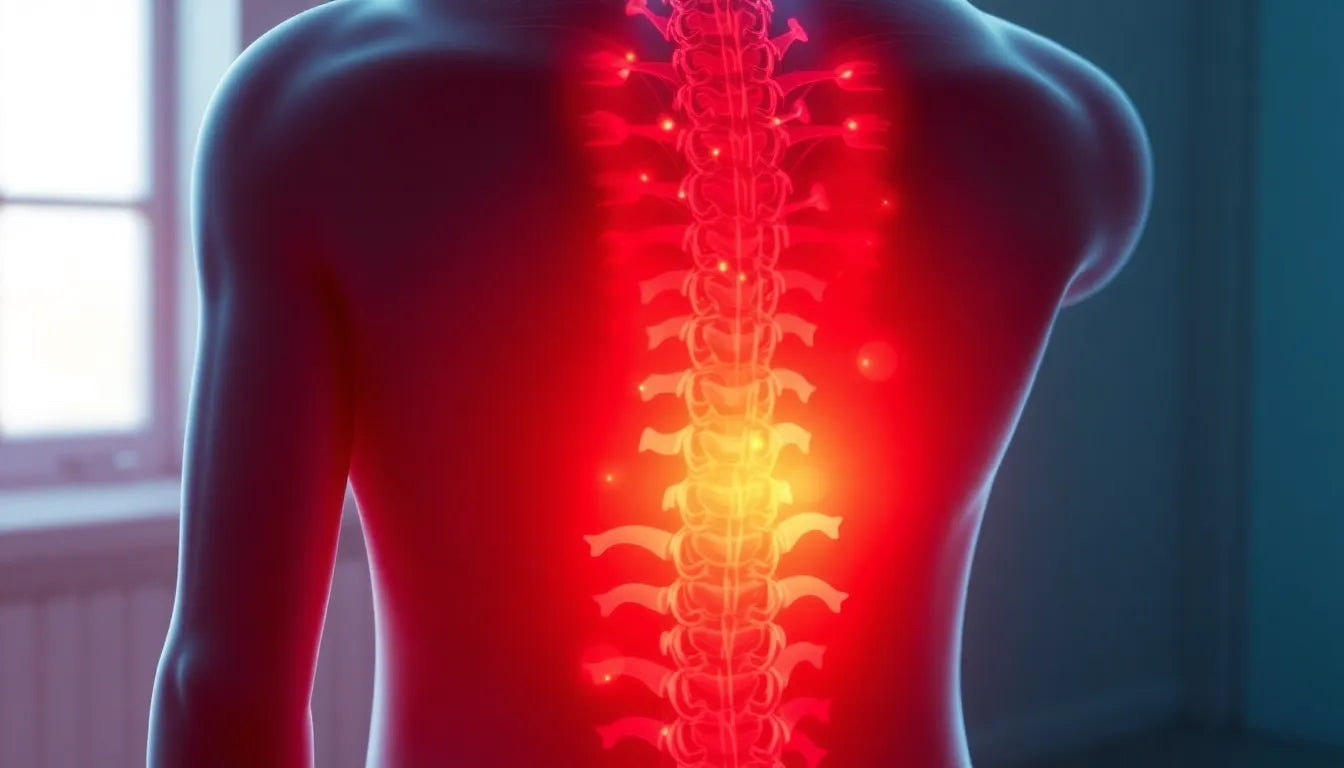Experiencing foot pain can be perplexing, especially when the root cause lies not in the foot itself, but in the spine. This is often the case with a herniated disc, a condition where the soft center of a spinal disc pushes through a crack in the tougher exterior casing. When this occurs, it can lead to nerve compression, causing pain to radiate down the leg and into the foot. Understanding this connection is crucial, as it underscores the complexity of the human spine and its far-reaching effects on various parts of the body.
Understanding the link between herniated discs and foot pain
The spine is an intricate structure composed of vertebrae, discs, nerves, and muscles, all working in harmony to support movement and flexibility. When a disc herniates, particularly in the lumbar region, it can exert pressure on the surrounding nerves. This pressure can manifest as pain, numbness, or tingling in areas far removed from the spine itself, such as the foot. This phenomenon highlights the interconnectedness of our body's systems and the importance of addressing spinal health to alleviate seemingly unrelated symptoms.
The prevalence of foot pain due to spinal issues
Foot pain resulting from spinal issues is more common than one might think. Many individuals suffer from this type of pain, often without realizing the true source of their discomfort. Herniated discs are a prevalent condition, and their impact on nerve function can lead to persistent foot pain that is resistant to typical treatments like rest or over-the-counter pain relievers. This underscores the necessity of proper diagnosis and treatment, which can significantly improve quality of life for those affected.
Could your foot pain be linked to a herniated disc?
Imagine experiencing persistent foot pain that doesn't seem to respond to traditional remedies. You've tried resting, icing, and even changing your footwear, yet the discomfort lingers. If this scenario sounds familiar, it might be worth considering whether a herniated disc could be the underlying cause. Recognizing the signs and seeking a professional evaluation can pave the way for effective treatment and relief.
Causes and symptoms of herniated disc pain in the foot
When a herniated disc occurs, particularly in the lumbar region of the spine, it can lead to nerve compression. This compression is a primary culprit behind the sensation of pain radiating into the foot. The lumbar spine is home to several nerve roots that extend down into the legs and feet, and when these nerves are compressed, it can result in a variety of symptoms. According to insights from Florida Foot Specialists and NewYork-Presbyterian, common symptoms include pain that travels from the lower back down to the foot, numbness, tingling, and even muscle weakness in the affected area.
It's important to note that while a herniated disc is a common cause of such symptoms, other spinal conditions can also lead to similar experiences. Conditions like lumbar degenerative disc disease and lumbar spinal stenosis can also compress nerves, causing pain and discomfort in the foot. Understanding the specific cause of these symptoms is crucial for effective treatment.
Diagnosing herniated disc-related foot pain
Accurate diagnosis is key to addressing foot pain caused by a herniated disc. The process typically begins with a thorough physical examination and a detailed patient history to identify any patterns or triggers associated with the pain. Imaging tests, such as MRI or CT scans, are often employed to provide a clear view of the spine and pinpoint the exact location and severity of the herniation. These diagnostic tools are essential as they help differentiate between herniated disc-related pain and other potential causes of foot discomfort.
Treatment options for relief
Once a diagnosis is confirmed, treatment can begin. For many, conservative treatments are the first line of defense. These may include physical therapy, which focuses on strengthening the muscles around the spine and improving flexibility. Medications, such as anti-inflammatories or pain relievers, can also provide relief. Lifestyle modifications, including weight management and ergonomic adjustments, play a significant role in managing symptoms and preventing further injury.
In cases where conservative treatments do not provide sufficient relief, surgical interventions may be considered. Procedures such as a discectomy, which involves removing the portion of the disc that is pressing on the nerve, can offer significant improvement. The choice of treatment depends on the severity of the symptoms and the patient's overall health and preferences.
Comparing symptoms and treatments: herniated disc vs. other causes of foot pain
| Condition | Symptoms | Diagnostic Methods | Treatment Options |
|---|---|---|---|
| Herniated Disc | Pain radiating to the foot, numbness, tingling, muscle weakness | Physical exam, MRI, CT scan | Physical therapy, medications, possible surgery |
| Other Spinal Issues (e.g., Lumbar Stenosis) | Similar symptoms to herniated disc, often with additional back pain | Physical exam, MRI, CT scan | Physical therapy, medications, lifestyle changes, surgery if severe |
| Non-Spinal Causes (e.g., Plantar Fasciitis) | Localized foot pain, especially in the heel, without radiating pain | Physical exam, ultrasound, X-ray | Rest, orthotics, physical therapy, anti-inflammatory medications |
Understanding the differences between these conditions is crucial for effective treatment. By recognizing the specific symptoms and undergoing appropriate diagnostic tests, individuals can receive targeted treatments that address the root cause of their foot pain, leading to better outcomes and improved quality of life.
Managing and preventing herniated disc pain in the foot
For those dealing with herniated disc pain in the foot, managing symptoms and preventing further injury is crucial. Ergonomic aids can play a significant role in offering relief and comfort. These tools, such as lumbar support cushions and adjustable workstations, help maintain proper posture and reduce strain on the spine, which can alleviate pressure on the affected nerves.
In addition to ergonomic adjustments, lifestyle changes are essential for managing herniated disc-related foot pain. Maintaining a healthy weight is vital, as excess weight can increase pressure on the spine and exacerbate symptoms. Incorporating regular exercise into daily routines can also strengthen the muscles supporting the spine, improving flexibility and reducing the risk of future disc herniation. Exercises such as swimming, walking, and yoga are particularly beneficial as they promote gentle movement without placing undue stress on the spine.
Conclusion
Understanding the intricate link between herniated discs and foot pain is key to finding effective relief. By recognizing the symptoms and seeking professional diagnosis and treatment, individuals can take proactive steps to manage their condition. With a combination of ergonomic aids, lifestyle adjustments, and medical interventions, those affected by this condition can significantly improve their quality of life. Remember, personalized treatment plans tailored to individual needs are essential, so consulting with healthcare professionals is always recommended.
Frequently Asked Questions
Can a herniated disc cause numbness in the foot?
Yes, a herniated disc can compress nerves that lead to numbness and tingling in the foot. This occurs when the disc material irritates the nerve roots that extend into the lower extremities.
How is foot pain from a herniated disc diagnosed?
Diagnosis involves a combination of physical examinations, patient history, and imaging tests like MRI or CT scans. These methods help identify the location and severity of the herniation.
What are the best treatment options for herniated disc pain in the foot?
Treatment varies depending on severity but can include physical therapy, medications, and possibly surgery. Conservative treatments are often preferred initially, with surgery considered if symptoms persist.
Can lifestyle changes help alleviate symptoms?
Yes, maintaining a healthy weight, practicing good posture, and regular exercise can help manage symptoms. These changes reduce spinal stress and improve overall health, contributing to symptom relief.
How long does it take to recover from a herniated disc affecting the foot?
Recovery time varies; some people feel better in a few weeks with conservative treatment, while others may need longer, especially if surgery is involved. Individual factors such as age, overall health, and adherence to treatment plans also play a role in recovery duration.


















